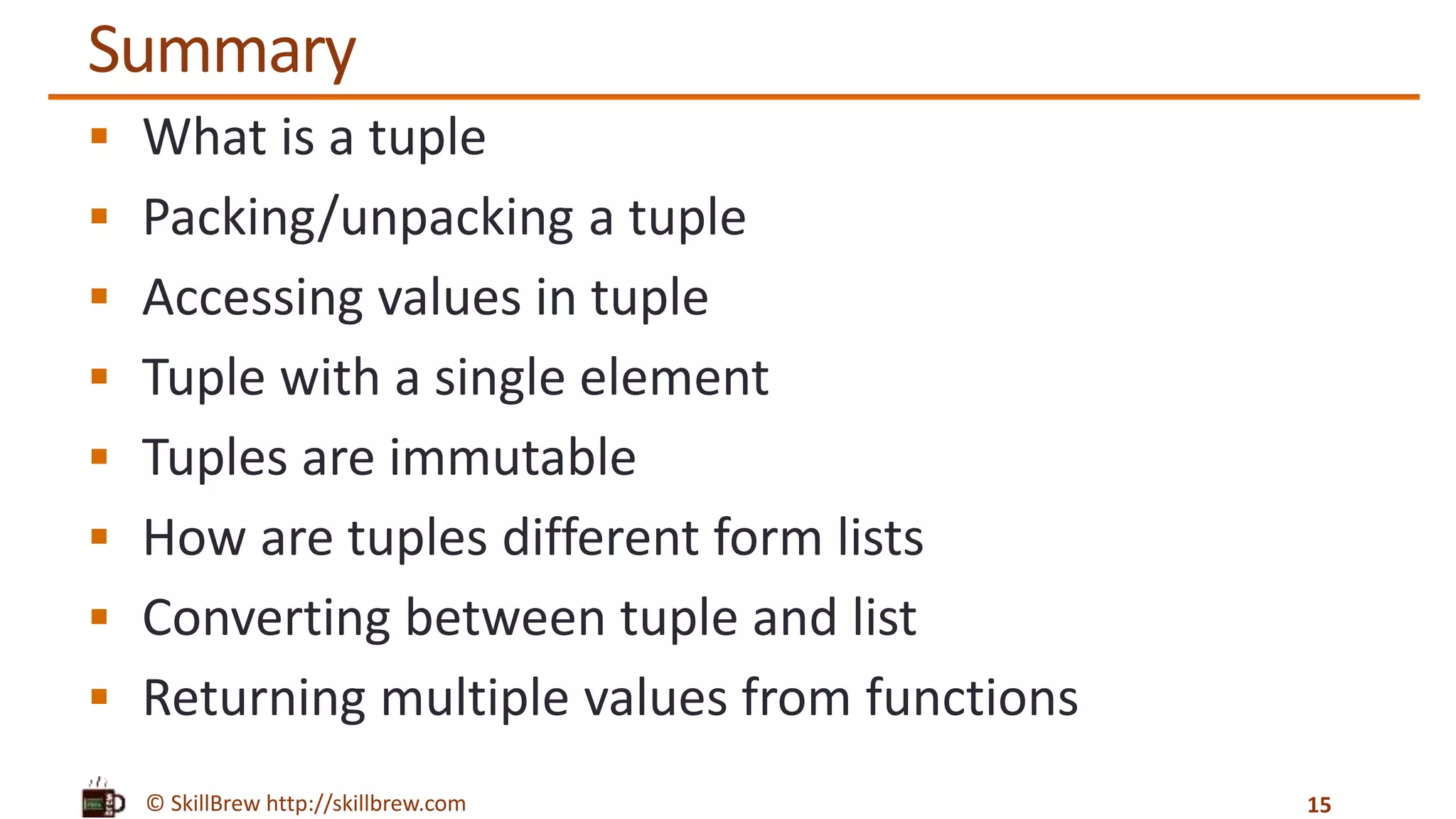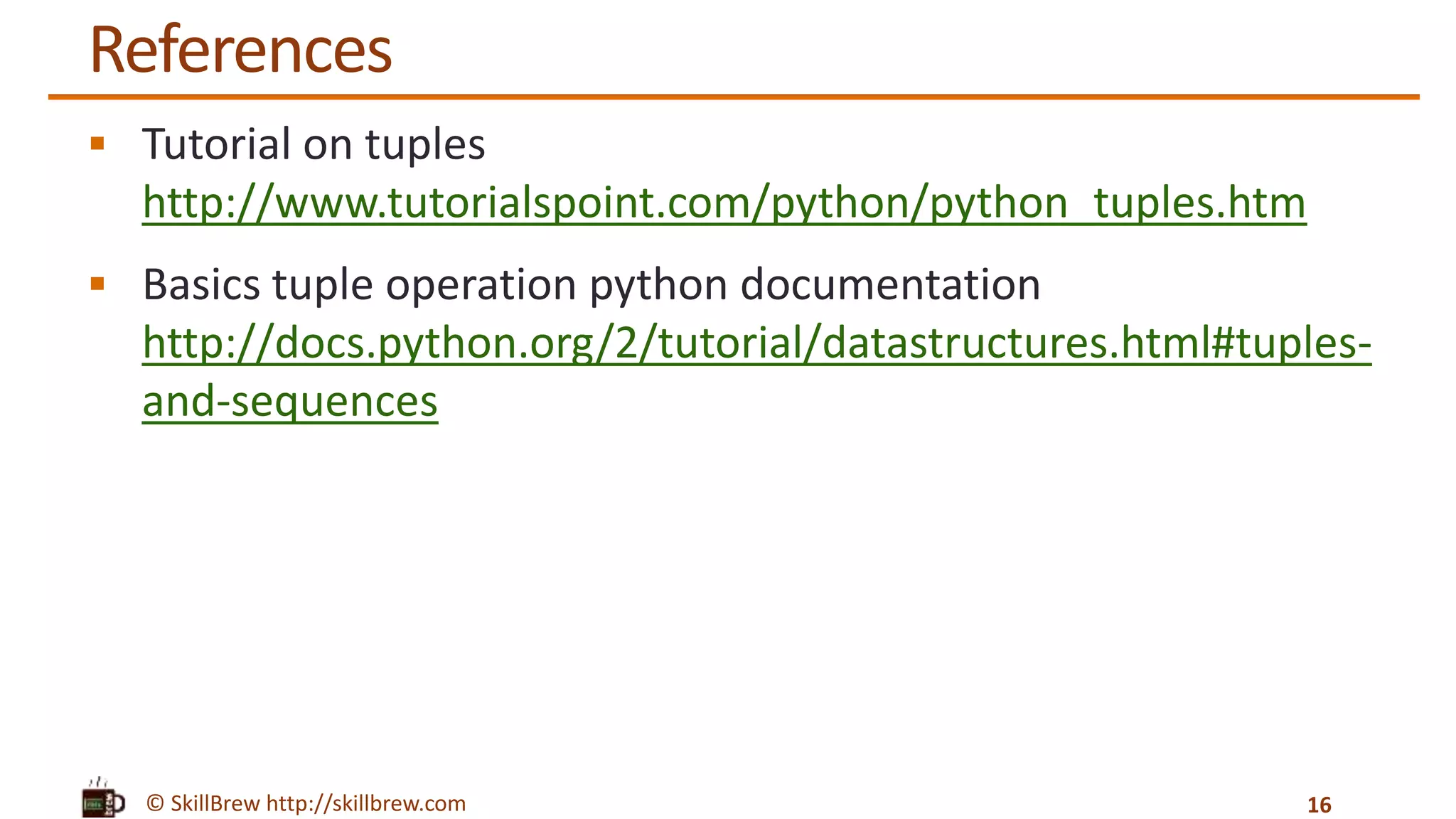The document discusses tuples in Python. It defines a tuple as an immutable sequence of items similar to a list. It provides examples of creating tuples using parentheses or packing, unpacking tuples into variables, accessing tuple elements by index, tuples with a single element requiring a trailing comma, common tuple operations like length, concatenation and slicing, and how tuples differ from lists in being immutable. It also covers converting between tuples and lists, and using tuples to return multiple values from functions.
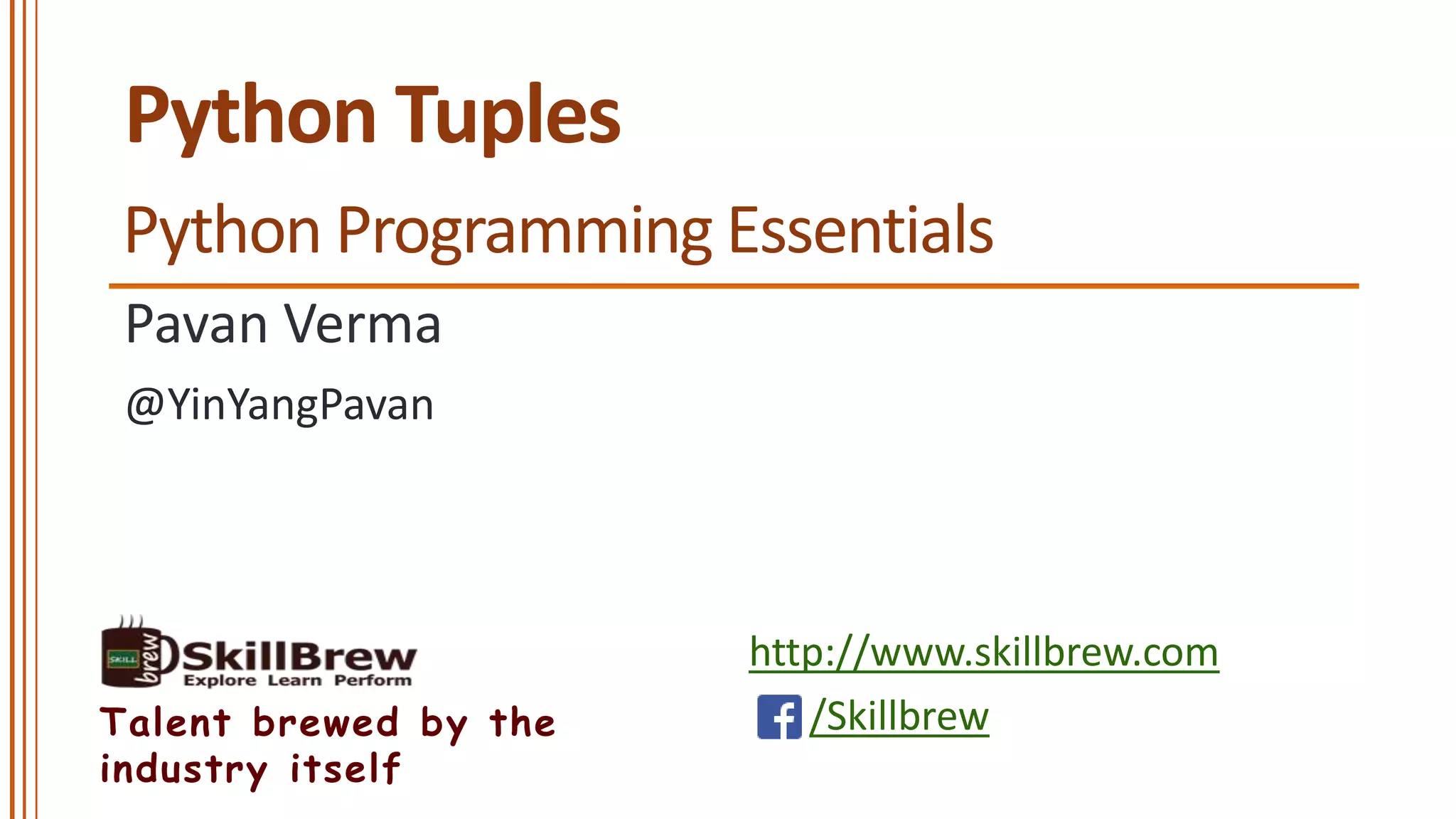
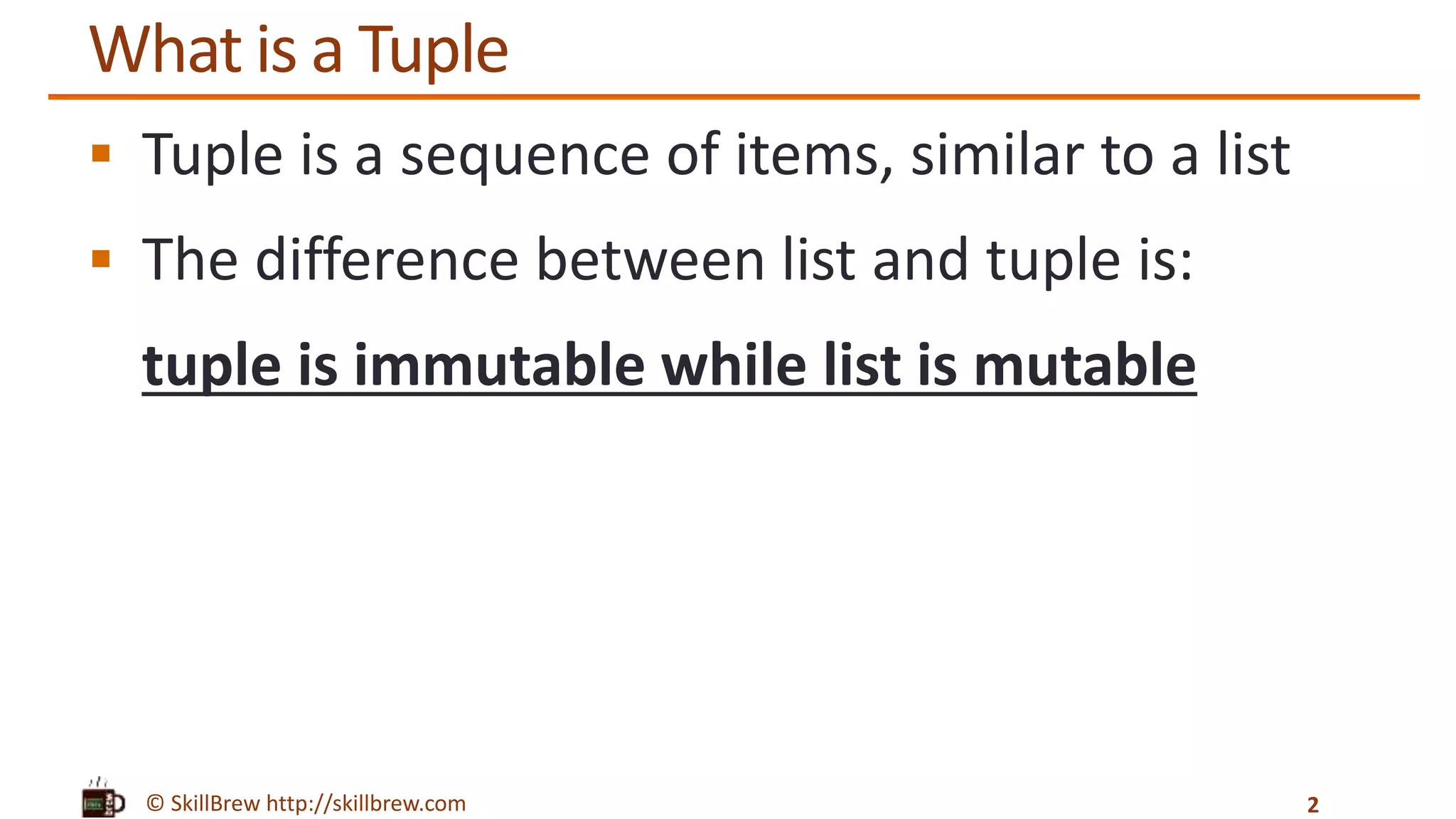
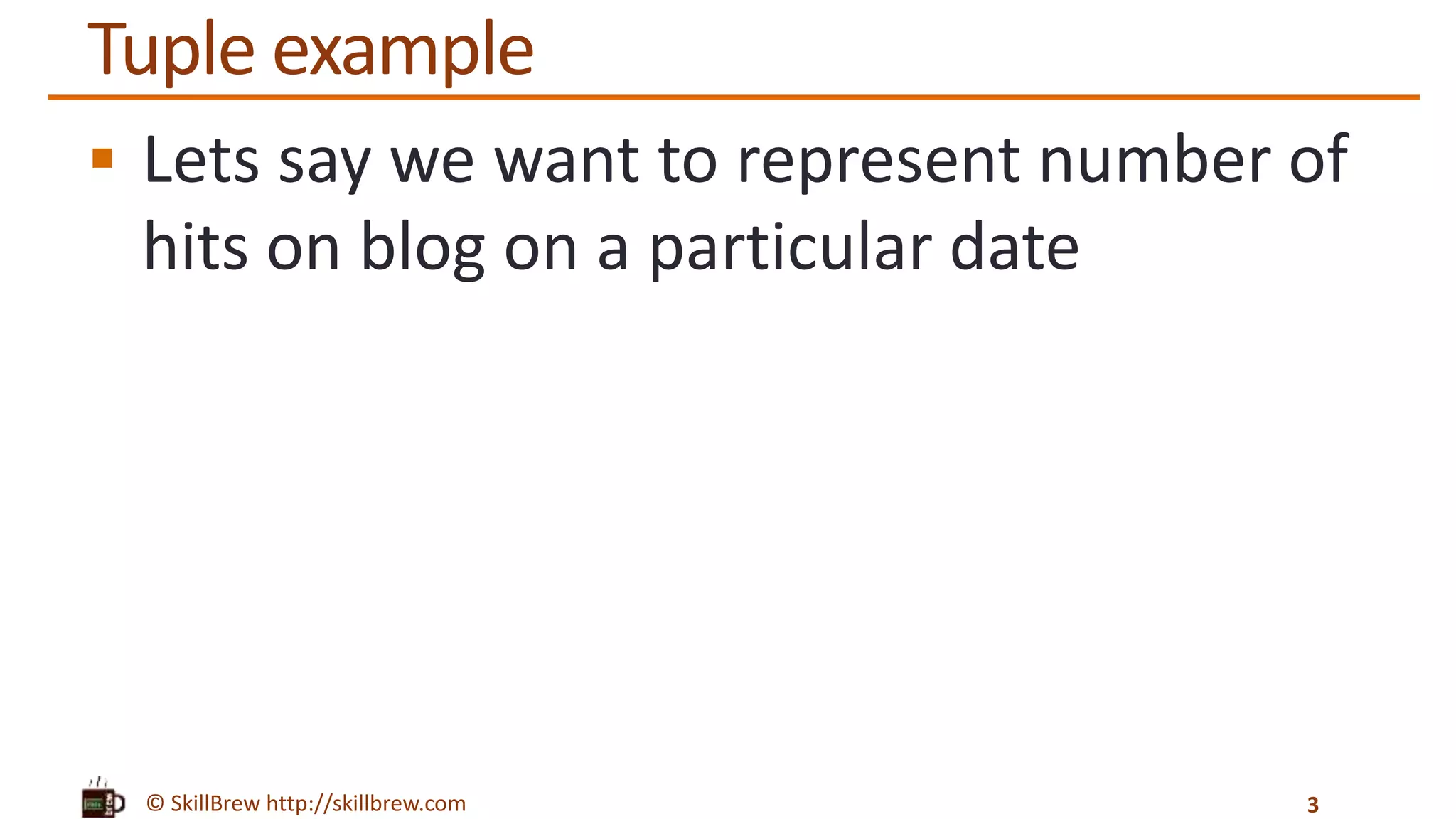
![© SkillBrew http://skillbrew.com
Lets create a tuple
Myblog.com 100 20-Oct-2013
4
blog_hits = ['Myblog.com', 50, '20-Oct-2013']
blog_hits = ('Myblog.com', 50, '20-Oct-2013')
list
tuple](https://image.slidesharecdn.com/pythonprogrammingessentials-m13-tuples-140819043204-phpapp01/75/Python-Programming-Essentials-M13-Tuples-4-2048.jpg)
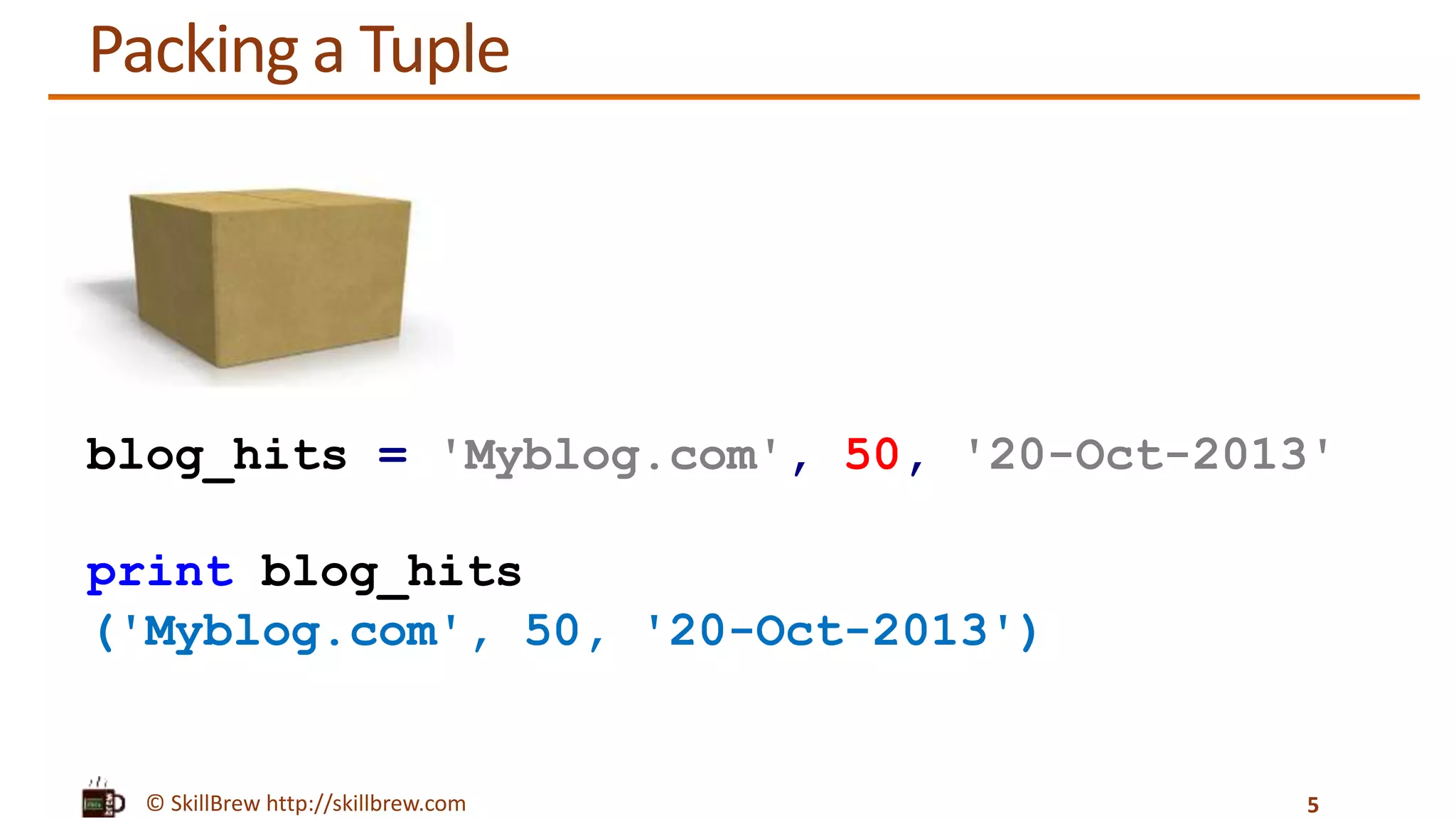
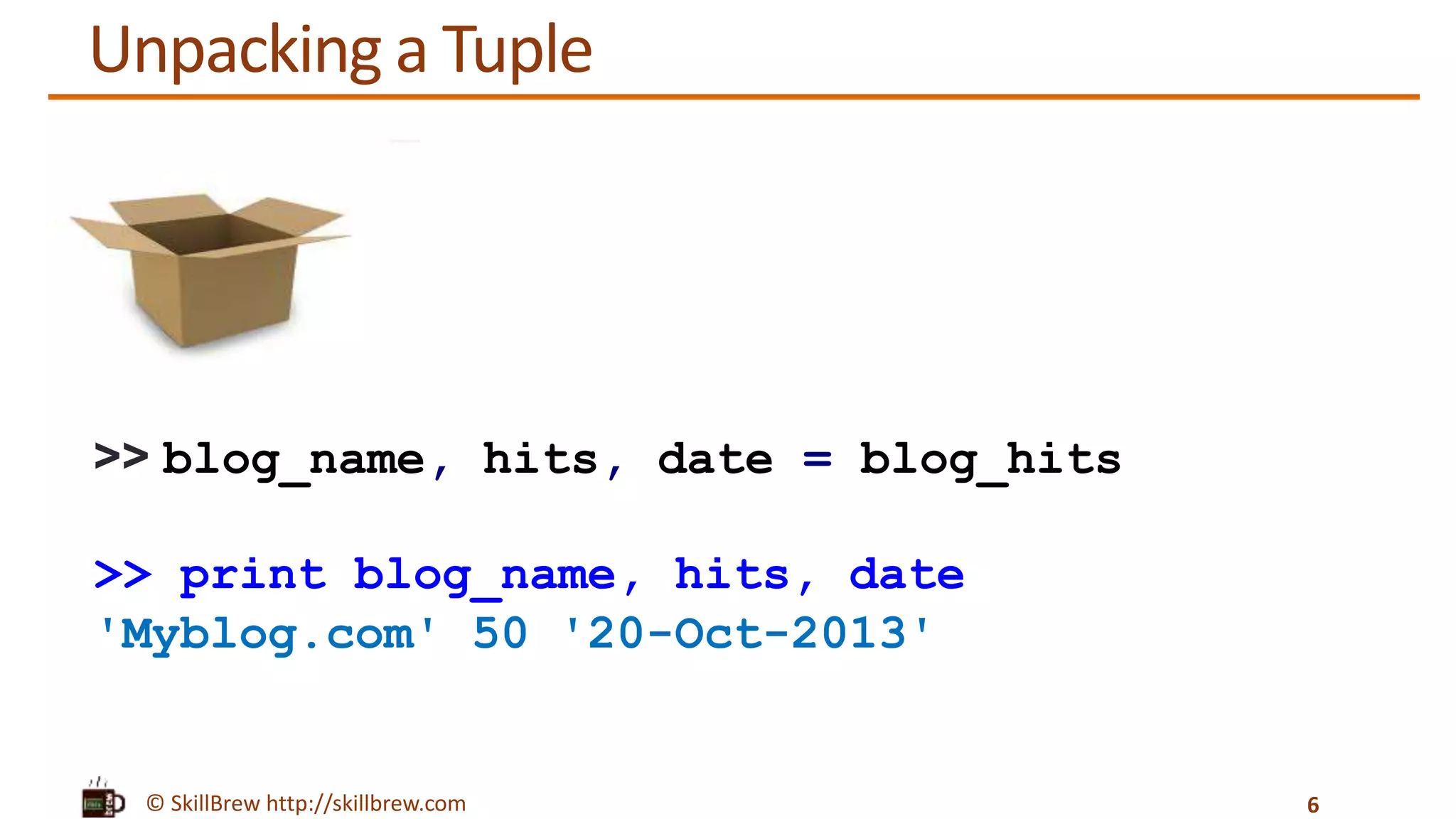
![© SkillBrew http://skillbrew.com
Accessing Values in Tuples
Myblog.com 100 20-Oct-2013
7
>>> blog_hits = ('Myblog.com', 50, '20-Oct-2013')
>>> blog_hits[0]
Myblog.com
>>> blog_hits[2]
20-Oct-2013
0 1 2](https://image.slidesharecdn.com/pythonprogrammingessentials-m13-tuples-140819043204-phpapp01/75/Python-Programming-Essentials-M13-Tuples-7-2048.jpg)
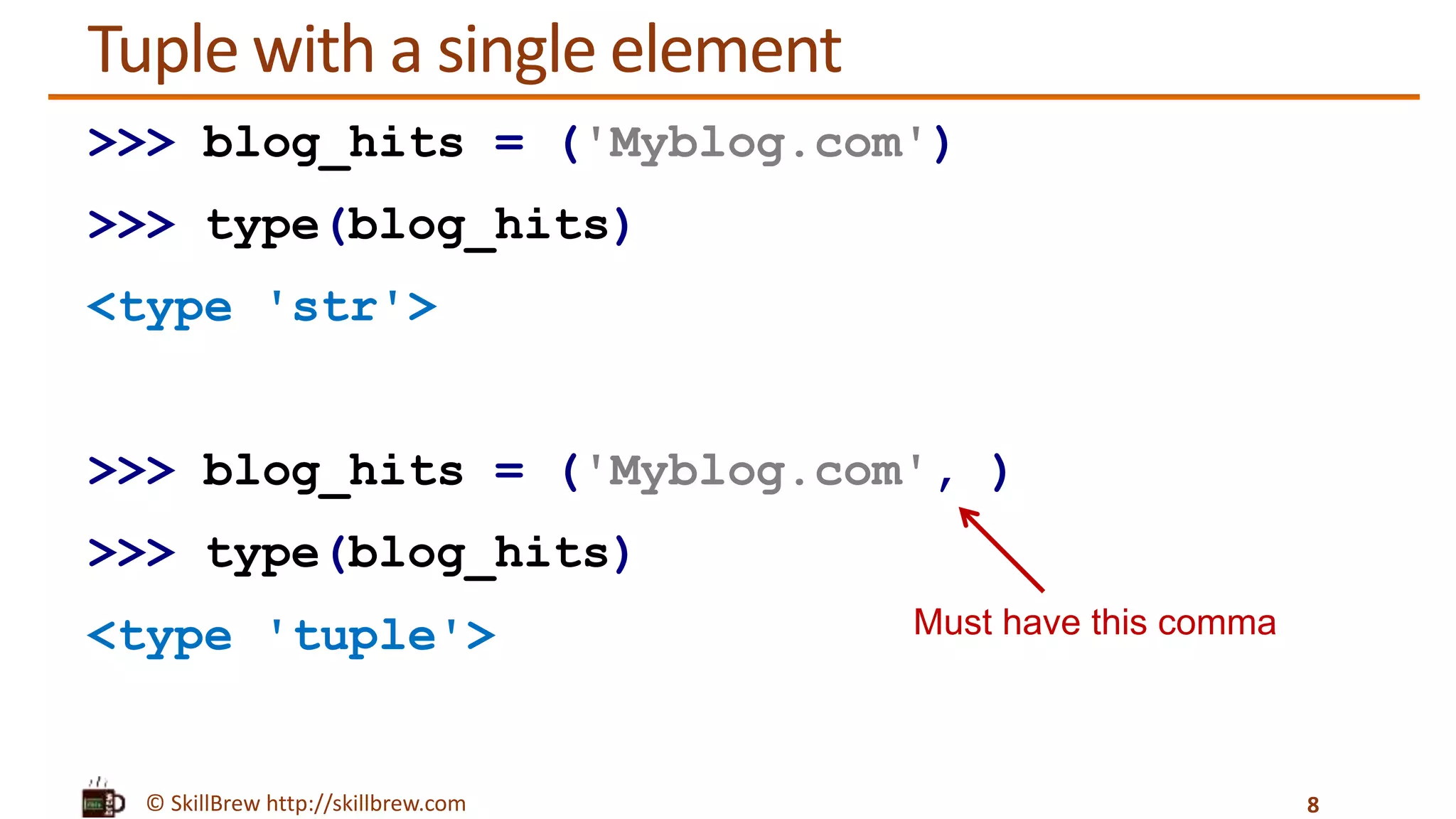
![© SkillBrew http://skillbrew.com
Common Operations on Tuples
9
Python Expression Results Description
len(1, 2, 3) 3 Length
(1, 2, 3) + (4, 5, 6) (1, 2, 3, 4, 5, 6) Concatenation
a = (1, 2, 3, 4, 5, 6)
a[2:5]
(3, 4, 5) Slicing](https://image.slidesharecdn.com/pythonprogrammingessentials-m13-tuples-140819043204-phpapp01/75/Python-Programming-Essentials-M13-Tuples-9-2048.jpg)
![© SkillBrew http://skillbrew.com
How are Tuples different from Lists
Apart from syntactical difference ( ) vs [ ], the real
difference is that lists are mutable whereas tuples
are not
Tuples (generally) are sequences of different kinds
of stuff, and you deal with the tuple as a coherent
unit
Lists (generally) are sequences of the same kind of
stuff, and you deal with the items individually
10](https://image.slidesharecdn.com/pythonprogrammingessentials-m13-tuples-140819043204-phpapp01/75/Python-Programming-Essentials-M13-Tuples-10-2048.jpg)
![© SkillBrew http://skillbrew.com
Tuples are Immutable
>>> blog_hits[0] = 'yourblog.com'
Traceback (most recent call last):
File "<pyshell#3>", line 1, in <module>
blog_hits[0] = 'yourblog.com'
TypeError: 'tuple' object does not support item assignment
11](https://image.slidesharecdn.com/pythonprogrammingessentials-m13-tuples-140819043204-phpapp01/75/Python-Programming-Essentials-M13-Tuples-11-2048.jpg)
![© SkillBrew http://skillbrew.com
Example of tuple and list usage
>>> colors = ['red', 'green', 'blue']
>>> colors = [
('red', '#FF0000'),
('green', '#00FF00'),
('blue', '#0000FF')
]
12
• tuples are used in Python where a struct would be
used in C/C++
• Tuples usually heterogeneous data whereas lists
usually contain homogenous data](https://image.slidesharecdn.com/pythonprogrammingessentials-m13-tuples-140819043204-phpapp01/75/Python-Programming-Essentials-M13-Tuples-12-2048.jpg)
![© SkillBrew http://skillbrew.com
Converting a tuple to list
>>> blog_hits = ('Myblog.com', 50, '20-Oct-2013')
>>> list(blog_hits)
['Myblog.com', 50, '20-Oct-2013']
13
Use list() function to convert
a tuple to a list](https://image.slidesharecdn.com/pythonprogrammingessentials-m13-tuples-140819043204-phpapp01/75/Python-Programming-Essentials-M13-Tuples-13-2048.jpg)
![© SkillBrew http://skillbrew.com
Use tuple to return multiple values from functions
Tuples are used to return multiple values from a function
14
>>> def points(x):
y = 1 - x
return x, y
>>> points(.5)
(0.5, 0.5)
>>> t = points(.3)
>>> t
(0.3, 0.7)
>>> t[0]
0.3
>>> t[1]
0.7
>>>](https://image.slidesharecdn.com/pythonprogrammingessentials-m13-tuples-140819043204-phpapp01/75/Python-Programming-Essentials-M13-Tuples-14-2048.jpg)
